Mon, 23 May, 02:00 - 05:30 UTC
Organizers
- Mr. Ganghua Yang, Senior Technical Specialist of WTLAB, Huawei Technologies, China
- Mr. Shaobo Wang, Deputy Minister of RAN Research Dept, Wireless Network, Huawei Technologies, China
- Dr. Fei Liu, Huawei Technologies, Singapore
Workshop Description/Motivation
With the rapid deployment and commercialization of 5G networks globally, more and more new applications keep emerging in the market, which definitely triggers an explosion of mobile data traffic. It is projected that the data of usage (DoU) of an individual user per month will reach 150 GB by 2025 from 10 GB in 2020 at a compound annual growth rate (CAGR) of 65%. In addition to traditional data service, AV/VR users have grown by 35% annually and will contribute DoU largely beyond 2025. Also, 5G uplink capabilities must be improved by at least 10 times to satisfy uplink-centric services.
To deal with such a huge traffic amount on both downlink and uplink, it is believed that the evolving massive MIMO technology will be one of the indispensable and important means for that target. Recently several prospective technologies of massive MIMO are emerging and getting more and more attention. For example, novel antenna system architectures, such as extremely large aperture arrays (ELAA), holographic MIMO and smart surfaces (e.g., intelligent reflecting surfaces (IRSs) or reconfigurable intelligent surfaces (RISs)), and evolved network architectures, such as cell-free massive MIMO or user centric no cell (UCNC) deployment. Also, artificial intelligence (AI) / machine learning (ML) and electromagnetic information theory (EIT) are expected to lay the foundation for intelligent air interface design of massive MIMO transceivers.
However, these mentioned technologies are still far from commercial rolling-out. There are still many issues and challenges that need to be addressed from both theoretical and practical points of view. This workshop will bring a good opportunity to attendees from both academia and industry to present novel ideas and to exchange views on massive MIMO evolution openly. We hope that this will inspire the large number of researchers and engineers to think about and tackle the open issues towards the successful applications of these technologies in 5G-Adavnced and 6G.
Workshop Program Outline
- (10 mins) Welcome speech, Mr. Ganghua Yang
- (25 mins) Keynote #1, Mr. Rui Sun, Senior Vice President of Huawei Wireless Research, Huawei Technologies, China
- (25 mins) Keynote #2, Prof. Inkyu Lee, IEEE Fellow, Dean at the School of Electrical Engineering, Korea University, Seoul, Korea
- (25 mins) Keynote #3, Prof. Mérouane Debbah, IEEE Fellow, Chief Researcher of AI & Telecommunication Systems, Technology Innovation Institute, Abu Dhabi, United Arab Emirates
- (25 mins) Keynote #4, Prof. Linglong Dai, IEEE Fellow, Tsinghua University, Beijing, China
- (25 mins) Keynote #5, Prof. Qingjiang Shi, Tongji University, Shanghai, China
- (25 mins) Keynote #6, Prof. Tsung-Hui Chang, The Chinese University of Hong Kong, Shenzhen, China
- (50 mins) Panel Discussion, moderated by Ganghua Yang
Questions to be discussed
- Based on the consensus on the 5G/6G vision, which of these emerging antenna technologies is the most disruptive one with enormous gain? Does the current massive MIMO architecture need to be changed? And why?
- In practice, whether new antenna architectures, such as ELAA, IRS/RIS, and cellfree massive MIMO or user centric no cell (UCNC), will be used for 5G-Advanced towards 2025 and beyond. If not, what are obstacles for these emerging antenna technologies used for 5G-Advanced? What are research and engineering directions to make those technologies mature in real deployment?
- As a hot topic and research trend, would AI/ML be applied widely for massive MIMO which has already mature mathematical modelling and digital signal processing? And why?
- What are the emerging new use cases for mmWave MIMO toward and beyond?
Biographies of Organizers and Keynote Speakers
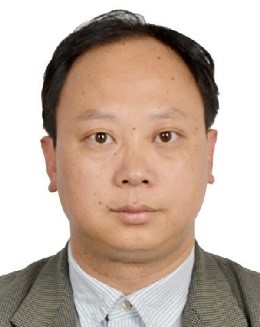
Ganghua Yang, Senior Technical Specialist of WT-LAB at Huawei
Huawei Technologies, China
Ganghua Yang received the B.S degree from the Department of Information and Electronics Technologies of Zhejiang University, China in 1991, the M.S. degree from China Academy of Telecommunications Technology (CATT), China in 1994. He is a senior technical specialist in WT-lab, Huawei Technologies. From April 1994 to May 1996, he was a researcher focus on physical layer of TDMA mobile communication system in First Research Institute of CATT. He joined Huawei Technologies in May 1996. He was the chief scientist of Radio Access Network of Wireless Network Product Line in Huawei Technologies from 2005 to 2008. He was one of founders of CPRI (Common Public Radio Interface, founded by Ericsson/Huawei/NEC/Nortel Networks/Siemens). He was awarded Second Prize of National Science and Technology Progress Award of the year 2000 for successfully developing the first commercial GSM system in China. His main interests cover wireless access network architecture, common physical layer algorithms, implementation architecture for copper line, microwave link and optical fiber link.
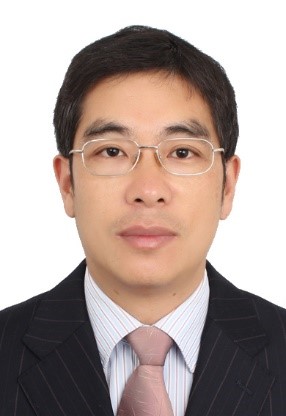
Shaobo Wang, Deputy Minister of RAN Research Dept, Wireless Network
Huawei Technologies, China
Shaobo Wang is a senior research expert in the field of wireless communication air interface system and the deputy minister of RAN Research Dept, Wireless Network, Huawei. He joined Huawei after graduating from Zhejiang University in 2000. From 2000 to 2008, he was responsible for the design of baseband receiver algorithms for the 3G UTMS system. From 2008, he led the R&D work of physical-layer and low-MAC algorithms in GSM, UMTS, LTE, and 5G NR systems, laying a foundation for the competitiveness of Huawei’s network products. Since 2017, he has been engaged in leading the research of key 5G air interface technologies in fields such as coding, modulation, waveform, multiple access, multiple antennas, and RAN network architecture, as well as exploring new 5G-Advanced air interface technologies such as Uplink Centric Broadband Communication, Real-Time Broadband Communication, and Harmonized Communication and Sensing. He has served and will serve as general and/or program co-chair of several international conferences/workshops, including, IEEE VTC Workshop on Technology and Standardization Evolution for 5G New Radio (2020), IEEE Globecom Workshop on ADVANCED TECHNOLOGY FOR 5G PLUS (2020), IEEE PIMRC Workshop on eXtended Reality (XR) for 5G and Beyond (2021) and IEEE Globecom Workshop on Evolution of MIMO Technology for Emerging Uplink-Centric 5.5G Applications (2021).
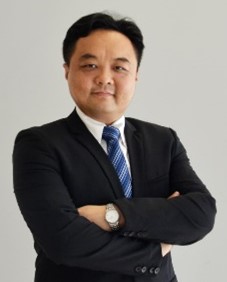
Rui Sun, Senior Vice President of Huawei Wireless Research
Huawei Technologies, China
Rui Sun is the senior Vice President of Huawei Wireless Research. He is currently leading the 5G and Beyond technologies research and development. He joined Huawei in 2000. For the past twenty years in Huawei, Mr. Sun has been served as Director of 2G/3G/4G R&D and business teams, and has been accumulated remarkable expertise in the fields of product development, basic research and industrial innovation. He has also made many outstanding achievements in each generation of mobile communications technology.
In 2017, Mr. Sun was appointed to direct the Wireless Network Research Department, which was in charge of 5G technology research and standardization. From since, he has been devoting himself to the development and commercialization of 5G and beyond. The concept and vision of 5.5G was first proposed by Mr. Sun and his team. His team is collaborating with global universities and research institutes on more than 100 projects. Their work aims to help overcome worldwide technological challenges in 5.5G, including theoretical breakthrough, structure design, and prototype implementation.

Prof. Inkyu Lee, Dean at the School of Electrical Engineering, Korea University, IEEE Fellow
Korea University, Seoul, Korea
Inkyu Lee (Fellow, IEEE) received the B.S. degree (Hons.) in control and instrumentation engineering from Seoul National University, Seoul, South Korea, in 1990, and the M.S. and Ph.D. degrees in electrical engineering from Stanford University, Stanford, CA, USA, in 1992 and 1995, respectively. From 1995 to 2002, he was a member of the Technical Staff with Bell Laboratories, Lucent Technologies, Murray Hill, NJ, USA, where he studied high-speed wireless system designs. Since 2002, he has been with Korea University, Seoul, where he is currently a Professor with the School of Electrical Engineering. He has also served as the Department Head for the School of Electrical Engineering, Korea University, from 2019 to 2021. In 2009, he was a Visiting Professor with the University of Southern California, Los Angeles, CA, USA. He has authored or coauthored more than 190 journal articles in IEEE publications and holds 30 U.S. patents granted or pending. His research interests include digital communications, signal processing, and coding techniques applied for next-generation wireless systems. Dr. Lee was a recipient of the IT Young Engineer Award at the IEEE/IEEK Joint Award in 2006, the Best Paper Award at the AsiaCPacific Conference on Communications in 2006, the IEEE Vehicular Technology Conference in 2009, the IEEE International Symposium on Intelligent Signal Processing and Communication Systems in 2013, the Best Research Award from the Korean Institute of Communications and Information Sciences in 2011, the Best Young Engineer Award from the National Academy of Engineering of Korea in 2013, and the Korea Engineering Award from the National Research Foundation of Korea in 2017. He has served as an Associate Editor for the IEEE TRANSACTIONS ON COMMUNICATIONS from 2001 to 2011 and the IEEE TRANSACTIONS ON WIRELESS COMMUNICATIONS from 2007 to 2011. In addition, he was a Chief Guest Editor for the IEEE JOURNAL ON SELECTED AREAS IN COMMUNICATIONS (Special Issue on 4G Wireless Systems) in 2006. He currently serves as the Co-Editor-in-Chief for the Journal of Communications and Networks. He has been elected as a member of the National Academy of Engineering of Korea in 2015, and is currently a Distinguished Lecturer of IEEE.
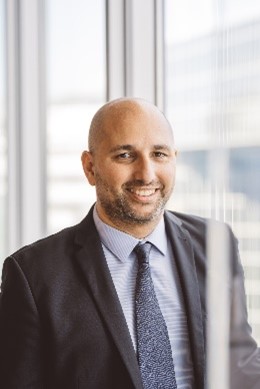
Prof. Mérouane Debbah, Chief Researcher of AI & Telecommunication Systems, IEEE Fellow
Technology Innovation Institute, Abu Dhabi, United Arab Emirates
Mérouane Debbah (Fellow, IEEE) received the M.Sc. and Ph.D. degrees from the Ecole NormaleSuperieure Paris-Saclay, France. He was with Motorola Labs, Saclay, France, from 1999 to 2002, and also with the Vienna Research Center for Telecommunications, Vienna, Austria, until 2003. From 2003 to 2007, he was an Assistant Professor with the Mobile Communications Department, Institut Eurecom, Sophia Antipolis, France. In 2007, he was appointed as a Full Professor with the CentraleSupelec, Gif-sur-Yvette, France. From 2007 to 2014, he was the Director of the Alcatel-Lucent Chair of Flexible Radio. Since 2014, he has been Vice-President of the Huawei France Research Center. He is currently the Director of the Mathematical and Algorithmic Sciences Lab as well as the Director of the Lagrange Mathematical and Computing Research Center. He has managed eight EU projects and more than 24 national and international projects. His research interests include fundamental mathematics, algorithms, statistics, information, and communication sciences research. He is also a Fellow of EURASIP and WWRF, and a Membre mrite SEE. He was a recipient of the ERC Grant MORE (Advanced Mathematical Tools for Complex Network Engineering) from 2012 to 2017. He was also a recipient of the Mario Boella Award in 2005, the IEEE Glavieux Prize Award in 2011, the Qualcomm Innovation Prize Award in 2012, the 2019 IEEE Radio Communications Committee Technical Recognition Award, and the 2020 SEE Blondel Medal. He received more than 20 best paper awards, among which the 2007 IEEE GLOBECOM Best Paper Award, the Wi-Opt 2009 Best Paper Award, the 2010 Newcom Best Paper Award, the 2012 and 2013 WUN CogCom Best Paper Award, the 2014 WCNC Best Paper Award, the 2015 ICC Best Paper Award, the 2015 IEEE Communications Society Leonard G. Abraham Prize, the 2015 IEEE Communications Society Fred W. Ellersick Prize, the 2016 IEEE Communications Society Best Tutorial Paper Award, the 2016 European Wireless Best Paper Award, the 2017 Eurasip Best Paper Award, the 2018 IEEE Marconi Prize Paper Award, the 2019 IEEE Communications Society Young Author Best Paper Award, and the Valuetools 2007, Valuetools 2008, CrownCom 2009, Valuetools 2012, SAM 2014, and 2017 IEEE Sweden VT-COM-IT Joint Chapter best student paper awards. He is also an Associate Editor-in-Chief of the journal Random Matrix: Theory and Applications. He was an Associate Area Editor and a Senior Area Editor of the IEEE TRANSACTIONS ON SIGNAL PROCESSING from 2011 to 2013 and from 2013 to 2014, respectively. Since 2021, he has been serving as an IEEE Signal Processing Society Distinguished Industry Speaker.
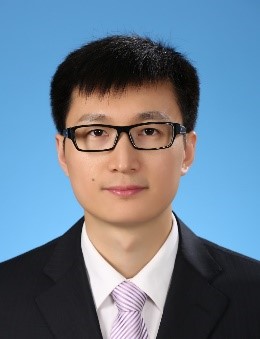
Prof. Linglong Dai, Associate Professor of the Department of Electronic Engineering, IEEE Fellow
Tsinghua University, Beijing, China
Linglong Dai (Fellow, IEEE) received the B.S.degree from Zhejiang University, Hangzhou, China, in 2003, the M.S. degree (with the highest honor) from the China Academy of Telecommunications Technology, Beijing, China, in 2006, and the Ph.D. degree (with the highest honor) from Tsinghua University, Beijing, China, in 2011. From 2011 to 2013, he was a Postdoctoral Research Fellow with the Department of Electronic Engineering, Tsinghua University, where he was an Assistant Professor from 2013 to 2016 and has been an Associate Professor since 2016. His current research interests include reconfigurable intelligent surface (RIS), massive MIMO, millimeter-wave and Terahertz communications, and machine learning for wireless communications. He has coauthored the book MmWave Massive MIMO: A Paradigm for 5G (Academic Press, 2016). He has authored or coauthored over 70 IEEE journal papers and over 40 IEEE conference papers. He also holds 19 granted patents. He has received five IEEE Best Paper Awards at the IEEE ICC 2013, the IEEE ICC 2014, the IEEE ICC 2017, the IEEE VTC 2017-Fall, and the IEEE ICC 2018. He has also received the Tsinghua University Outstanding Ph.D. Graduate Award in 2011, the Beijing Excellent Doctoral Dissertation Award in 2012, the China National Excellent Doctoral Dissertation Nomination Award in 2013, the URSI Young Scientist Award in 2014, the IEEE Transactions on Broadcasting Best Paper Award in 2015, the Electronics Letters Best Paper Award in 2016, the National Natural Science Foundation of China for Outstanding Young Scholars in 2017, the IEEE ComSoc Asia-Pacific Outstanding Young Researcher Award in 2017, the IEEE ComSoc Asia-Pacific Outstanding Paper Award in 2018, the China Communications Best Paper Award in 2019, the IEEE Access Best Multimedia Award in 2020, and the IEEE Communications Society Leonard G. Abraham Prize in 2020. He was listed as a Highly Cited Researcher by Clarivate Analytics in 2020 and 2021. He was elevated as an IEEE Fellow in 2022. He is an Area Editor of IEEE COMMUNICATIONS LETTERS, and an Editor of IEEE TRANSACTIONS ON COMMUNICATIONS and IEEE TRANSACTIONS ON VEHICULAR TECHNOLOGY. Particularly, he is dedicated to reproducible research and has made a large amount of simulation codes publicly available.
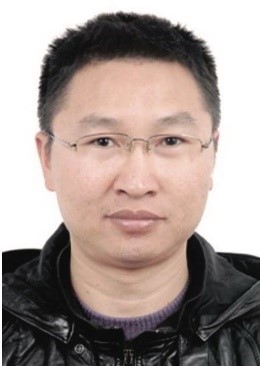
Prof. Qingjiang Shi, Professor of the School of Software Engineering
Tongji University, Shanghai, China
Qingjiang Shi received the Ph.D. degree in electronic engineering from Shanghai Jiao Tong University, Shanghai, China, in 2011. From September 2009 to September 2010, he visited Prof. Z.-Q. (Tom) Luo’s Research Group, University of Minnesota, Twin Cities, MN, USA. In 2011, he was a Research Scientist with Bell Labs China. Since 2012, he has been with the School of Information and Science Technology, Zhejiang SciTech University, Hangzhou, China. From February 2016 to March 2017, he was a Research Fellow with Iowa State University, Ames, IA, USA. Since March 2018, he has been a Full Professor with the School of Software Engineering, Tongji University, Shanghai. He is also with the Shenzhen Research Institute of Big Data. He has authored or coauthored more than 60 IEEE journals and filed about 30 national patents. His interests include algorithm design and analysis with applications in machine learning, signal processing, and wireless networks. He was awarded the Golden Medal at the 46th International Exhibition of Inventions of Geneva in 2018, and also a recipient of the First Prize of Science and Technology Award from the China Institute of Communications in 2018, the National Excellent Doctoral Dissertation Nomination Award in 2013, the Shanghai Excellent Doctoral Dissertation Award in 2012, and the Best Paper Award from the IEEE PIMRC’09 Conference. He was an Associate Editor of the IEEE TRANSACTIONS ON SIGNAL PROCESSING.
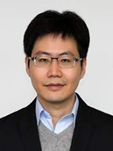
Prof. Tsung-Hui Chang, Associate Professor of the School of Science and Engineering
The Chinese University of Hong Kong, Shenzhen, China
Tsung-Hui Chang (Senior Member, IEEE) received the B.S. degree in electrical engineering and the Ph.D. degree in communications engineering from the National Tsing Hua University (NTHU), Hsinchu, Taiwan, in 2003 and 2008, respectively. From 2012 to 2015, he was an Assistant Professor with the Department of Electronic and Computer Engineering, National Taiwan University of Science and Technology (NTUST), Taipei, Taiwan. In August 2015, he joined the School of Science and Engineering (SSE), The Chinese University of Hong Kong, Shenzhen (CUHK-SZ), China, as an Assistant Professor, where he has been an Associate Professor since August 2018. Prior to being a Faculty Member, he held research positions with NTHU from 2008 to 2011, and the University of California, Davis, CA, USA, from 2011 to 2012. His research interests include signal processing and optimization problems in data communications, machine learning, and big data analysis. Dr. Chang received the Young Scholar Research Award of NTUST in 2014, the IEEE ComSoc Asian–Pacific Outstanding Young Researcher Award in 2015, the IEEE Signal Processing Society (SPS) Best Paper Award in 2018, and the Outstanding Faculty Research Award of SSE, CUHK-SZ, in 2021. He has been an Elected Member of IEEE SPS Signal Processing for Communications and Networking Technical Committee (SPCOM TC) since January 2020. He is the Funding Chair of IEEE SPS Integrated Sensing and Communication Technical Working Group (ISAC TWG). He has served the editorial board for major SP journals, including an Associate Editor (from August 2014 to December 2018) and a Senior Area Editor (since February 2021) for IEEE TRANSACTIONS ON SIGNAL PROCESSING, and an Associate Editor for IEEE TRANSACTIONS ON SIGNAL AND INFORMATION PROCESSING OVER NETWORKS (from January 2015 to December 2018) and IEEE OPEN JOURNAL OF SIGNAL PROCESSING (since January 2020).
